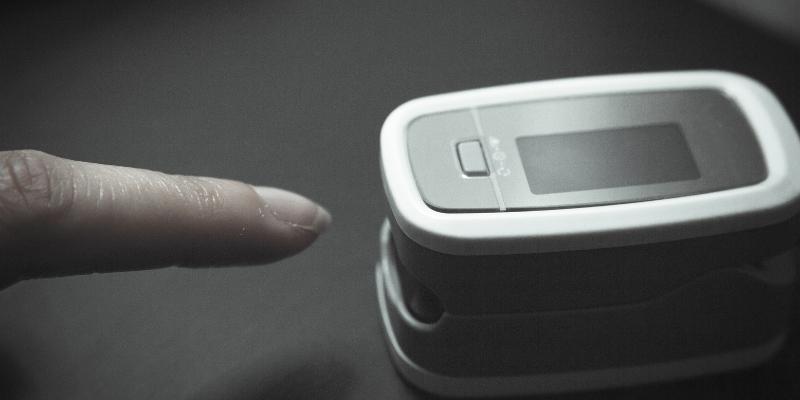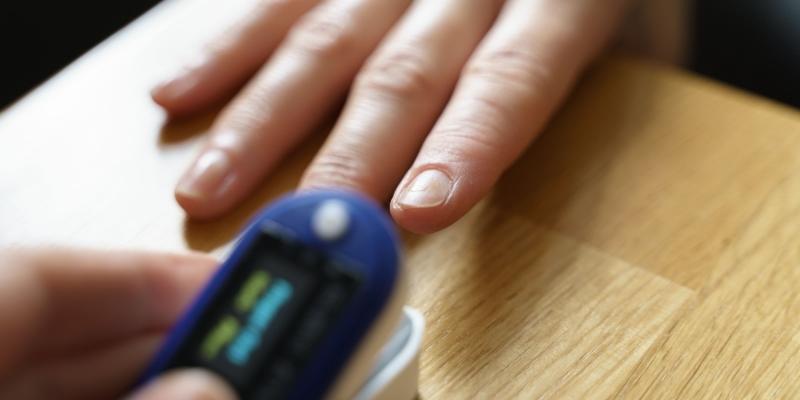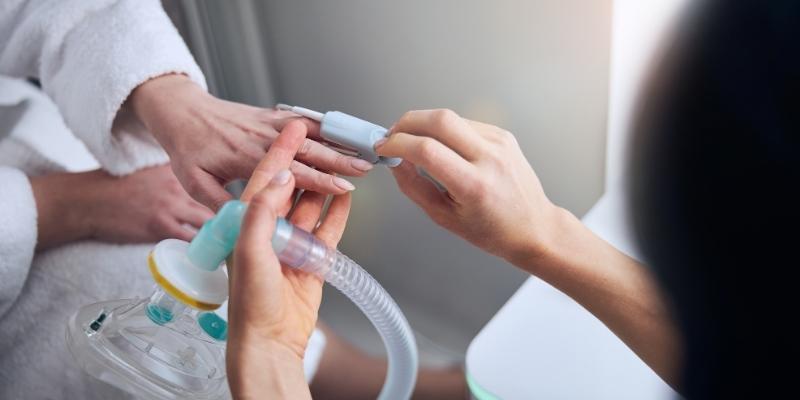Apple's newest wristwatch has grabbed attention as wearable technology has advanced. This buzz focuses on the watch's blood oxygen meter. This advancement in wearable health and well-being monitoring is significant. Not simply another device, it might revolutionize health monitoring.
As people seek strategies to manage their health, this new tool provides a viable path for thorough monitoring. This essay explores what makes Apple's new blood oxygen monitor watch appealing. We'll discuss its uses, user advantages, and health management concerns.

Understanding Blood Oxygen Monitoring:
Let's start with blood oxygen monitoring before discussing applications and benefits. It measures blood oxygen saturation. This data may reveal your health and well-being. Apple's watch measures blood oxygen by beaming light into your skin and measuring absorption. This calculates blood oxygen levels.
Blood oxygen levels indicate respiratory and circulatory health. Well-oxygenated blood gives your cells the oxygen they need to function correctly. A reduction in blood oxygen levels might suggest respiratory or sleep difficulties. Apple makes it easy for customers to get crucial health information by combining this technology into a wearable device.
Health and Wellness Applications:
The blood oxygen monitor has several health and wellness uses. Tracking respiratory health is a primary use. This feature may reveal your lung capacity, oxygen absorption, and tissue oxygen transport. Any athlete wanting to improve their exercises or someone with asthma may benefit from this monitoring.
This technique can also detect sleep apnea. Sleeping with interrupted breathing is sleep apnea. The watch may identify sleep apnea-related oxygen saturation drops by monitoring blood oxygen levels overnight. If necessary, users may see doctors for additional examination and therapy. This preventive technology might save the lives of individuals at risk of untreated sleep disorders. It is a novel feature and a lifeline for health-conscious and ill people.
Fitness and Performance Tracking:
Fitness and performance monitoring are more precise with the blood oxygen meter. It may help athletes and fitness lovers optimize exercises and training. Real-time oxygen measurements may reveal how well your body oxygenates working muscles. This information may improve training regimens and help you accomplish fitness objectives quicker.
Monitoring blood oxygen levels during high-intensity exercises or at high altitudes may alter the game for serious athletes. It may help individuals know when to push harder or rest, decreasing the danger of overexertion and health issues. It provides a complete picture of your body's reaction to exercise, improving training and performance.

Health Alerts and Emergency Situations:
Blood oxygen monitoring's capacity to detect health crises is crucial. Not only does this feature optimize exercises, it might save your life. Low blood oxygen levels may indicate respiratory discomfort, cardiac problems, and severe allergies. The watch can monitor your levels and inform you when they go beyond the healthy range, giving you time to seek treatment.
When the wearer is unresponsive, the watch may inform the user and emergency services, providing a vital safety net. If someone with severe allergies has an anaphylactic response and gets unconscious, the watch's alert mechanism may save their life. It shows how technology may improve safety and well-being as well as convenience.
User Experience and Data Management:
User experience is critical to this technology. For wearables to be helpful, they must be comfortable and discreet. Apple designed the watch to be elegant and ergonomic. The watch is comfortable to wear daily and at night, providing continuous monitoring.
Data management is essential for user comfort. The watch records a lot of health data, including blood oxygen levels. Thus, it must be kept securely and accessible by authorized users. Apple uses end-to-end encryption and user-controlled access to secure user data. This lets consumers evaluate and utilize data while respecting privacy.
The Future of Wearable Health Technology:
Looking forward, wearable health technology is advancing quickly. The Apple blood oxygen monitor is one example of this development, but it's not the end. Health-monitoring functions in wearable gadgets will undoubtedly become more advanced. We're reaching the point when smart gadgets can revolutionize healthcare by providing important health information.
Wearable health technology empowers people to manage their health and significantly affects the healthcare business. These gadgets provide proactive and personalized treatment, helping doctors detect and cure illnesses faster. These developments will benefit health-conscious customers and healthcare practitioners who can use this data to improve patient care. Your Apple Watch's blood oxygen monitor represents the start of wearable health technology's impact on healthcare.
Precision and Accuracy of Blood Oxygen Monitoring:
The efficiency of blood oxygen monitoring depends on its precision and accuracy. The sensor on Apple's new watch uses sophisticated technologies for maximum accuracy. It properly measures blood oxygen concentration and color using red and infrared LED lights. The watch's proprietary, ultra-precise algorithms enable these measurements. This advanced technology provides accurate, real-time blood oxygen levels even during activity or at high altitudes.
The watch's exact measurements are helpful in many situations. They can show athletes how well their muscles get oxygen during exercise. These values may help monitor respiratory health or identify early diseases in medicine—health monitoring benefits from the technology's precision and dependability, which help consumers make educated health choices.
The Role of Blood Oxygen in Health Management:
Blood oxygen levels are crucial to illness management. These levels might reveal your body's capacity to supply oxygen to tissues, maintaining optimum performance. Hypoxemia low blood oxygen levels, may indicate several health concerns. Tracking blood oxygen levels may help people with COPD or asthma recognize lung function decline. People with sleep apnea, which interrupts breathing during sleep, may use blood oxygen monitoring to detect low oxygen saturation at night. Early identification allows prompt intervention and treatment, improving long-term health.
Blood oxygen also affects everyday well-being. Tracking these levels may reveal how nutrition, exercise, and sleep alter oxygen saturation. This knowledge may help people make health-conscious choices and be proactive. Wearable gadgets like the Apple Watch make blood oxygen monitoring data accessible, allowing people to manage their health.
Conclusion:
In conclusion, Apple's new watch's blood oxygen meter marks a milestone in wearable health technologies. This function may improve fitness and performance monitoring and warn of health risks. This effective personal safety equipment may even protect you in emergencies. Such functionalities depend on user experience and data management. The watch is comfortable and discreet enough to wear all day and night. User data is protected by data privacy and security procedures, enabling users to make educated health choices.
The future of wearable health technology promises more advanced and comprehensive health monitoring. These gadgets might revolutionize healthcare by providing consumers and providers with various health data for proactive and personalized treatment. Apple's blood oxygen monitor starts a spectacular journey towards wearable health management. It allows people to manage their health and opens fascinating new healthcare frontiers.




